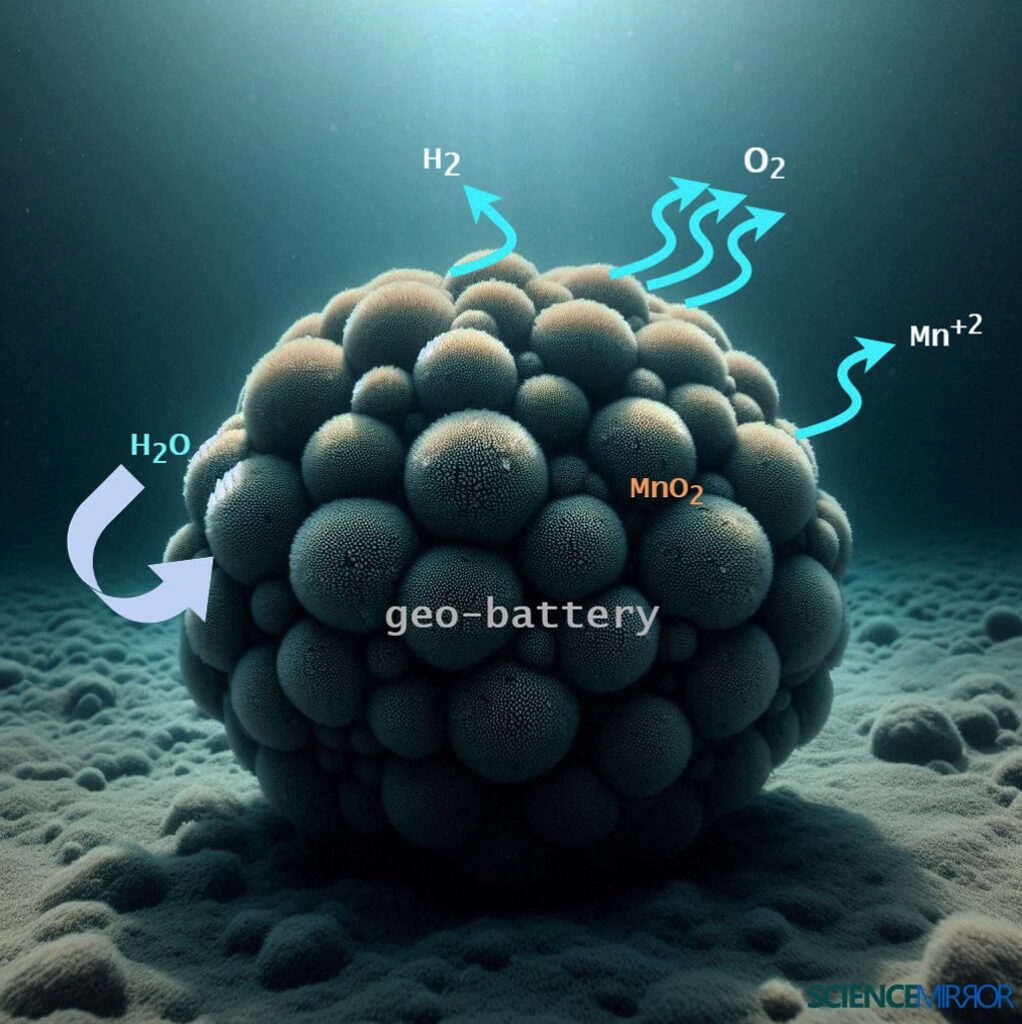Are you wondering what dark oxygen is? Well, it’s an interesting discovery that’s got deep sea researchers talking.
Yes, there’s another natural oxygen source besides photosynthesis. Dark oxygen produce in complete darkness, deep under the ocean’s surface.
This discovery emerged from a part of the Pacific Ocean called the Clarion-Clipperton Zone, which is also famous for its deep-sea mining, a treasure trove of valuable rocks with metals like manganese and nickel.
But how to oxygen production take place in a place where light never reaches? Let’s explore this phenomenon.

Why is it Called Dark Oxygen?
As you already know, oxygen produces with photosynthesis in the presence of sunlight. But Dark oxygen gets its name because It produces in total darkness using electrolysis, without sunlight.
This finding came as a surprise to research team of The Scottish Association for Marine Science, conducting experiments on the ocean floor in the Clarion-Clipperton Zone.
They expected to find oxygen consumption by sediment and deep-sea organisms. But what they found was truly unexpected oxygen levels in their benthic chambers were increasing!
The big question was: where was this extra oxygen coming from?
How is Dark Oxygen Formed?
This is where things get really interesting.
Researchers believe this oxygen is somehow linked to polymetallic nodules strange, metal coated rocks containing metals like manganese and nickel. Now these nodules identify as dark oxygen rocks. According to the findings, These nodules might be involved in an electrochemical reaction.
Imagine these nodules acting like a battery, powering the production of oxygen from water. The different layers of metal oxides in the nodules could be working like electrodes, creating a voltage that splits water molecules into oxygen and hydrogen. The research team expose this idea as the geo-battery hypothesis.
You’ve probably heard of seawater electrolysis. this process apply in renewable energy to split water into oxygen and hydrogen using electricity. Well, something similar could be happening naturally on the seafloor!

The Link to Polymetallic Nodules (dark oxygen rocks)
So, how do these nodules play a role in dark oxygen production?
It turns out that the more nodules there are in an area, the space for more oxygen production. Scientists found that oxygen production links to the surface area of the nodules. The larger the nodule or the more nodules present, the more oxygen was generated in their experiments.
Why does this happen? The nodules can generate voltage potentials of up to 0.95 volts enough to trigger the oxygen evolution reaction (a fancy term for splitting water into oxygen and hydrogen).
Manganese oxides in these nodules act as catalysts, speeding up the process. Manganese oxide reduce to manganese(II) when producing the oxygen. But according to the research group this is negligible.
Why This Discovery is a Big Deal
This discovery is huge because it challenges our understanding of how the deep-sea works. Previously, scientists believed all the oxygen on the seafloor came from surface water, transported by ocean currents.
But dark oxygen production shows the deep sea might have its own self-sustaining oxygen source.
Oxygen is important for life even in the deep sea. If these nodules are producing oxygen, it means organisms living near the seafloor might benefit from a previously unknown oxygen supply. This discovery could explain how certain life forms survive in the deep ocean, far from sunlight.
The Threat from Deep-Sea Mining
Now, here’s where things get concerning.
The Clarion-Clipperton Zone, where dark oxygen production discovered, is a hotspot for deep-sea mining. Companies want to mine the polymetallic nodules for valuable metals like manganese, nickel, and cobalt.
While mining may be economically valuable, it could have serious consequences for ocean ecosystems. Disturbance or removal of these nodules could disrupt the process of dark oxygen production. Without the nodules or if they cover with sediment, the natural electrochemical reactions might stop.
We don’t fully understand the consequences yet, but it’s definitely a reason for caution.
What We Don’t Know Yet
As exciting as this discovery is, many questions remain. For starters, how widespread is dark oxygen production? Is it unique to the Clarion-Clipperton Zone, or could it be happening in other oceans with similar nodules?
We also don’t know how long this oxygen production can continue. Is it a long-term, sustainable oxygen source, or does it depend on specific conditions, like nodule coverage or seawater chemistry?
And what impact could mining activities have on this process? Could it reduce or halt oxygen production? These are important questions researchers are working to answer.
Rethinking Deep-Sea Ecosystems
The discovery of dark oxygen production shows us just how much we still have to learn about the deep ocean and its ecosystems.
The deep sea is full of mysteries, and this discovery is one more reminder of how complex and interconnected everything is. Understanding how dark oxygen production works is essential if we want to protect these ecosystems especially as deep-sea mining becomes a reality.
We need to be careful about disrupting processes like dark oxygen production without fully understanding the impacts.
The deep sea isn’t just a source of valuable minerals. it’s also a unique and fragile ecosystem that supports countless species, many of which remain undiscovered.
Why Dark Oxygen Matters and What are the Uses?
So, there you have it. Dark oxygen is an incredible discovery that shows us there’s more happening in the deep ocean than we ever imagined. It’s tied to polymetallic nodules or dark oxygen rocks on the seafloor and may involve natural electrochemical reactions similar to seawater electrolysis.
While we still have much to learn, one thing is certain: this discovery could have major implications for how we understand and protect the deep ocean. Plus, the geo-battery hypothesis opens the door to explore exciting possibilities even for extraterrestrial life.
As we continue to explore the ocean’s depths, discoveries like this remind us of how much we still don’t know. Hopefully, with more research, we’ll uncover the full story of dark oxygen and ensure the sustainability of these deep-sea ecosystems.


